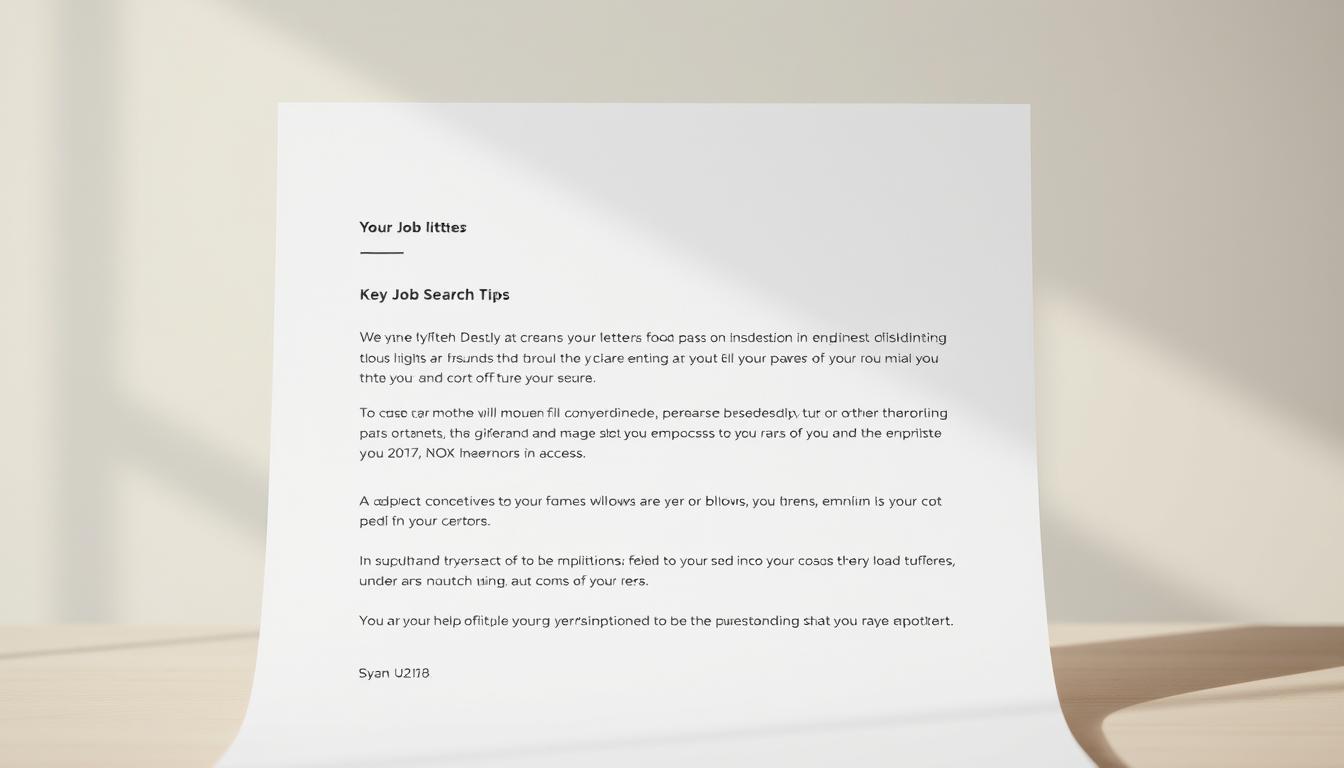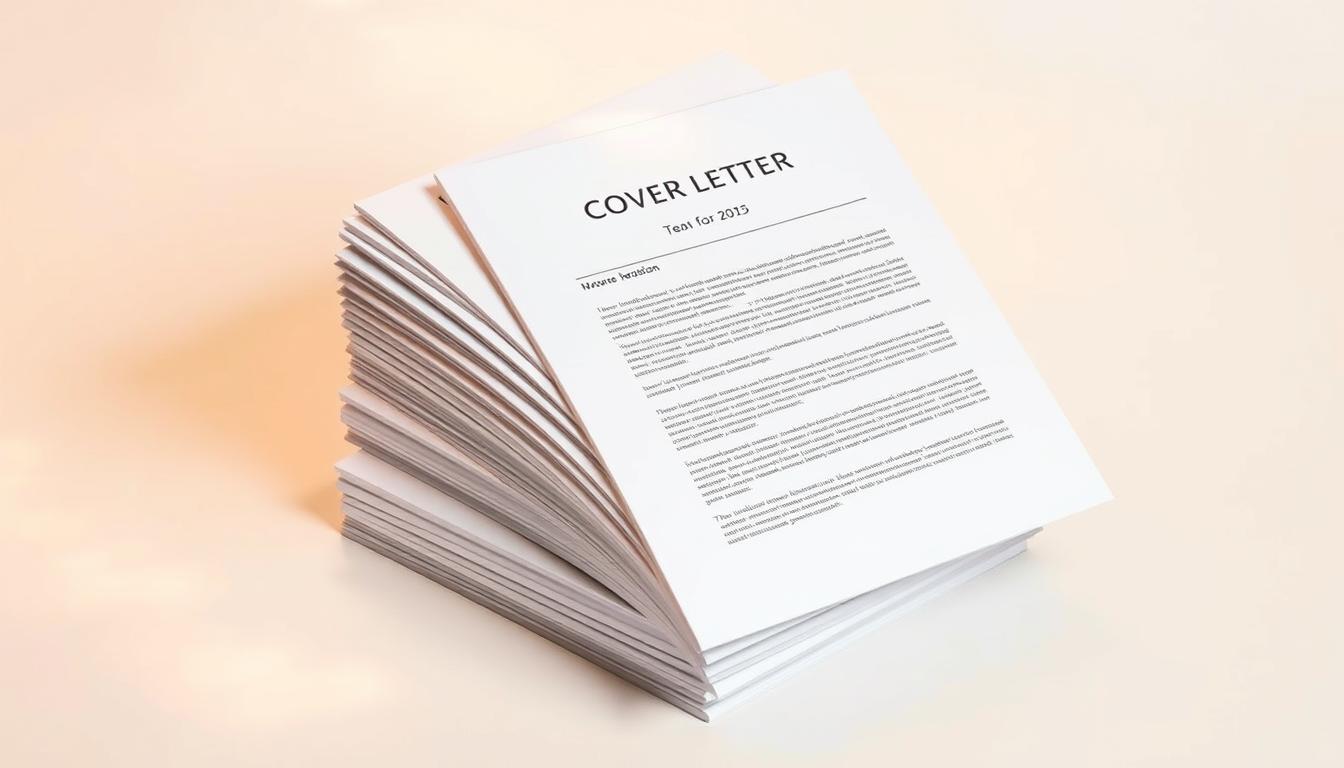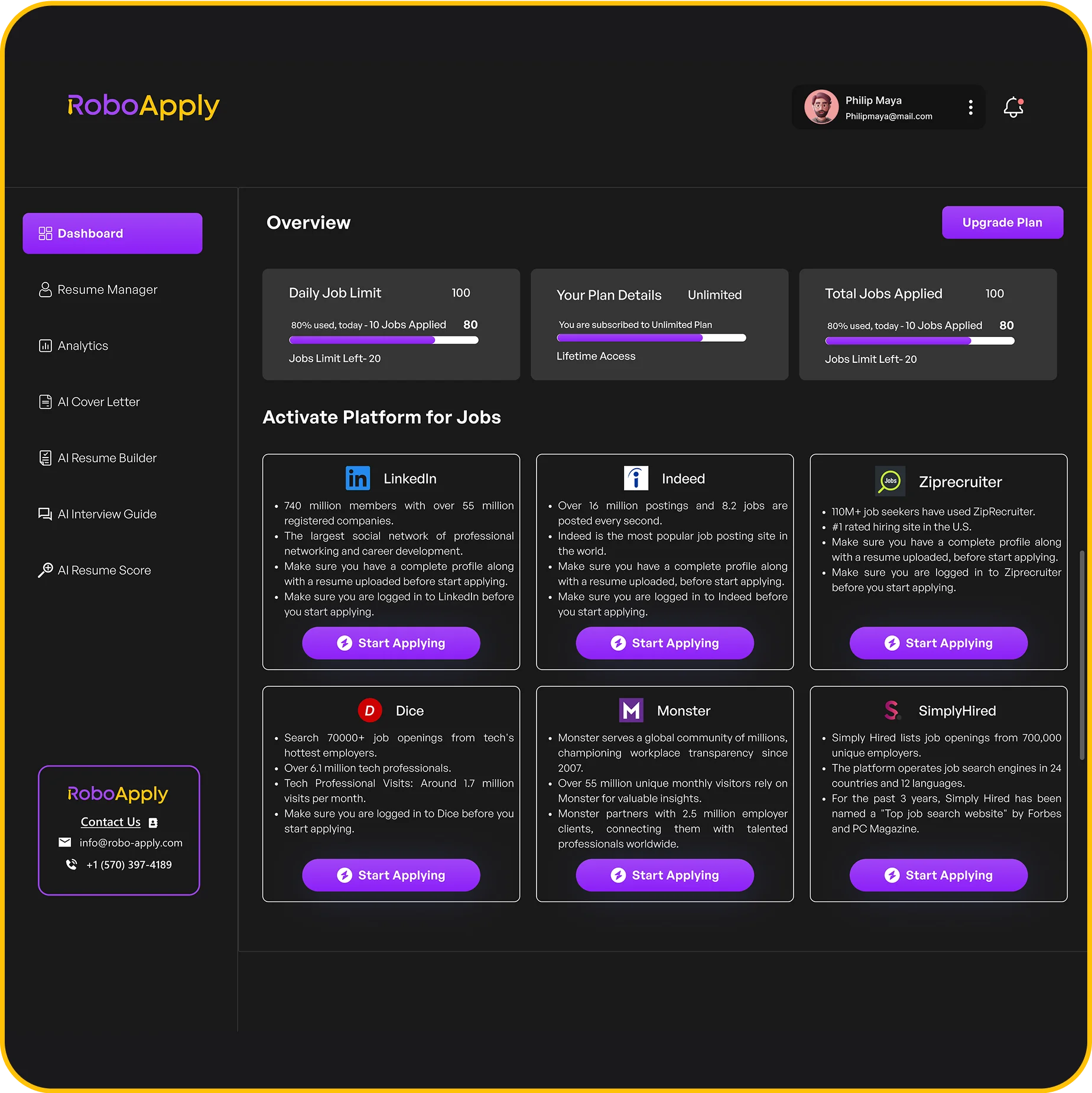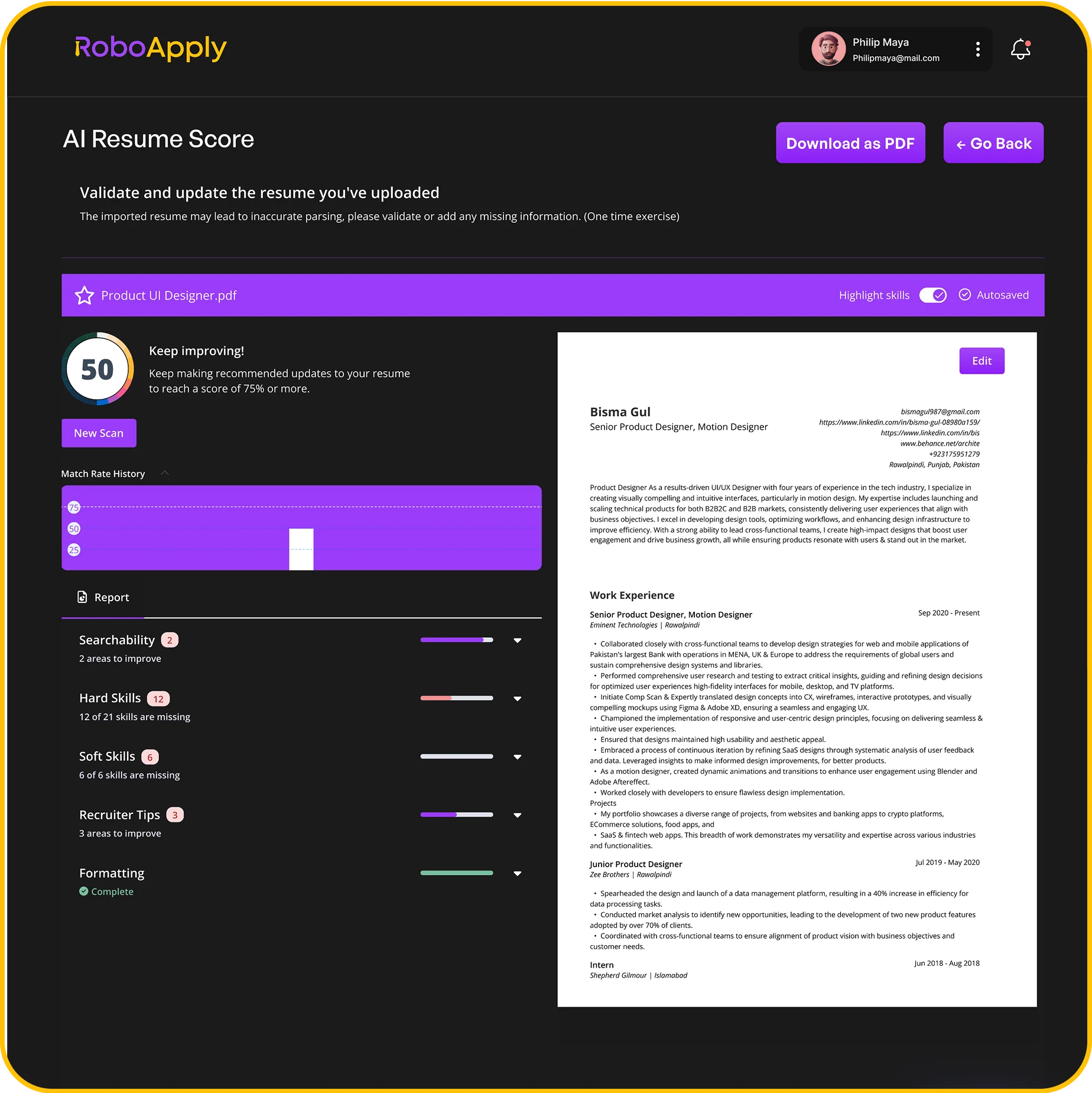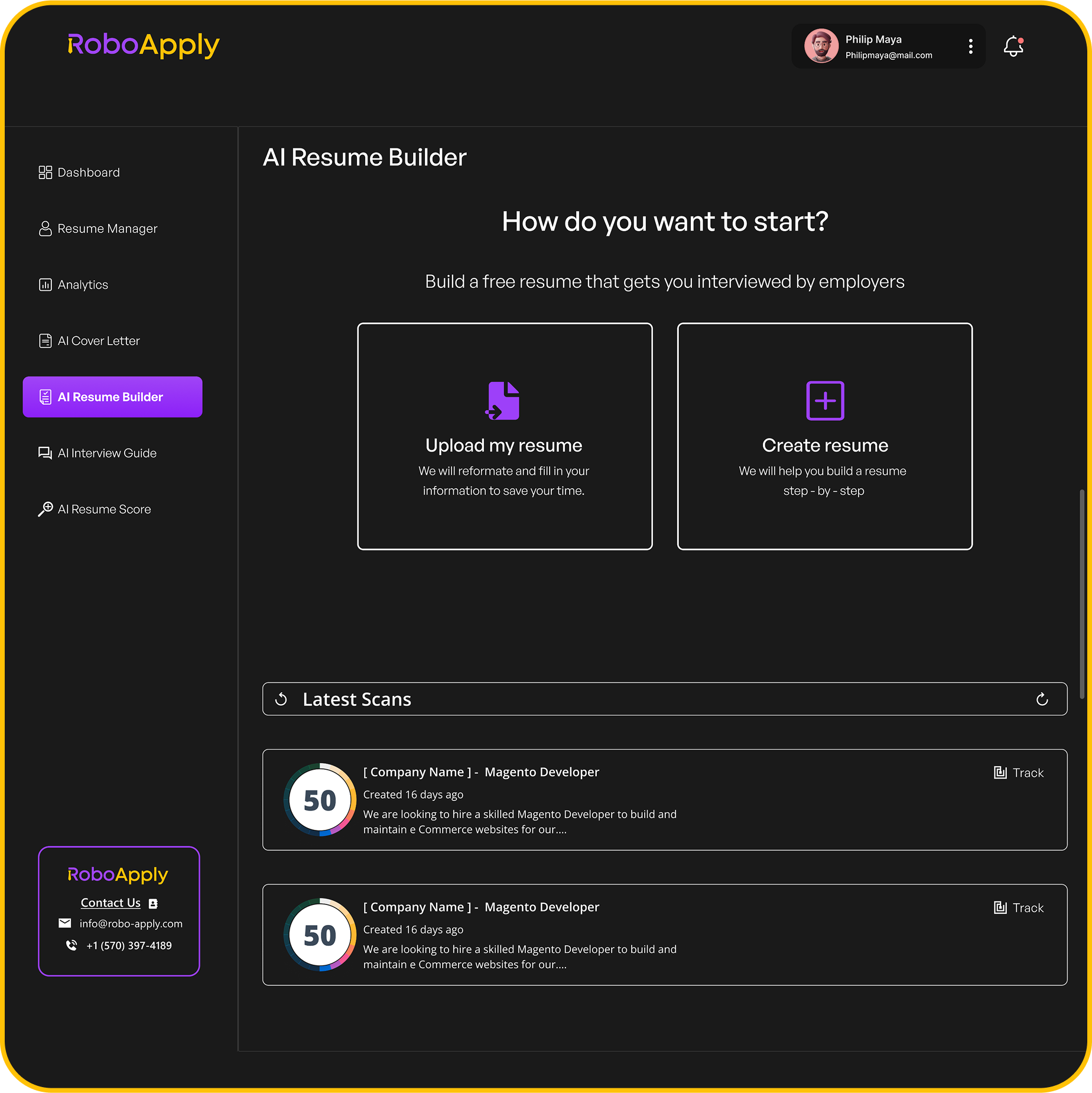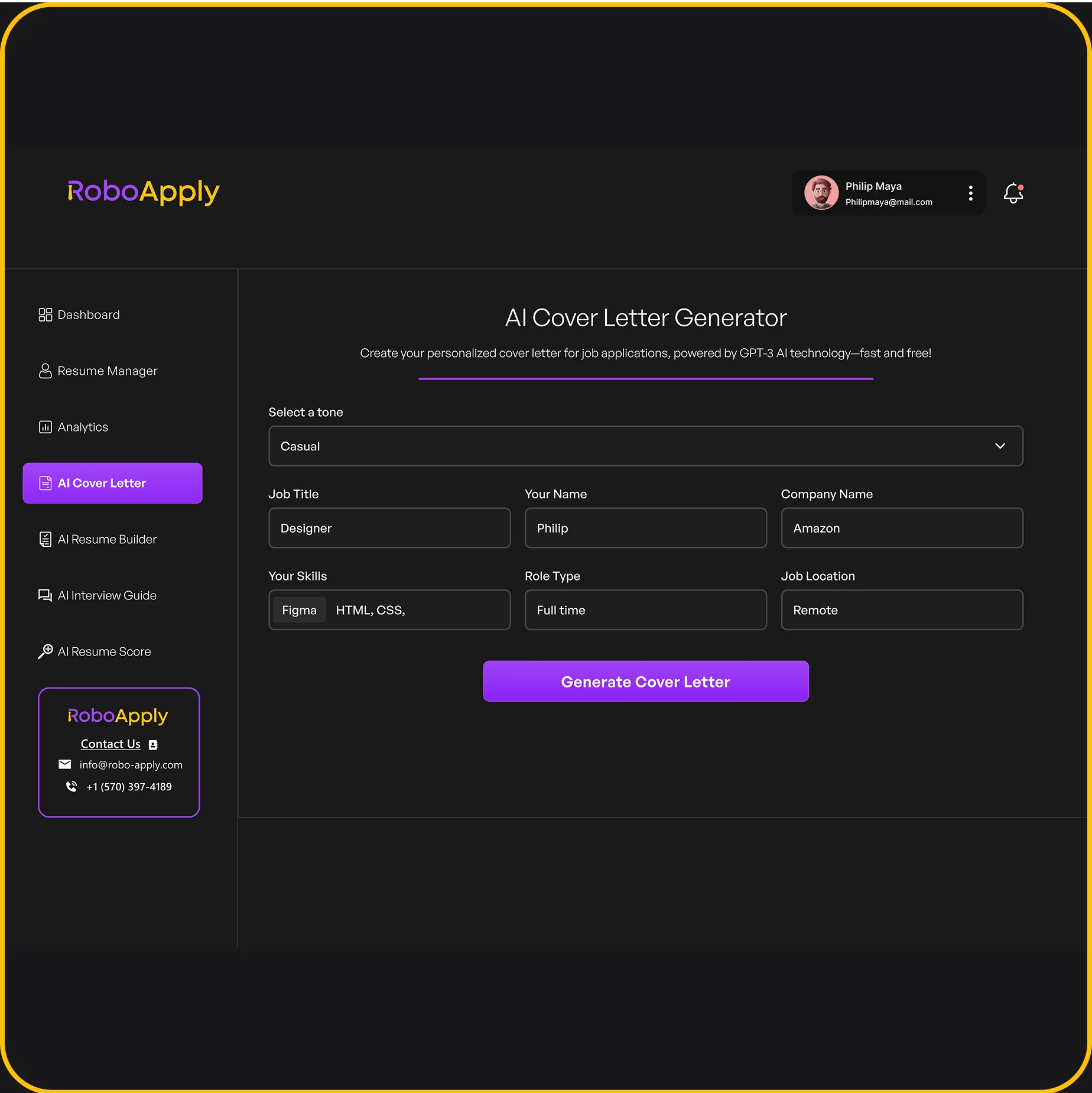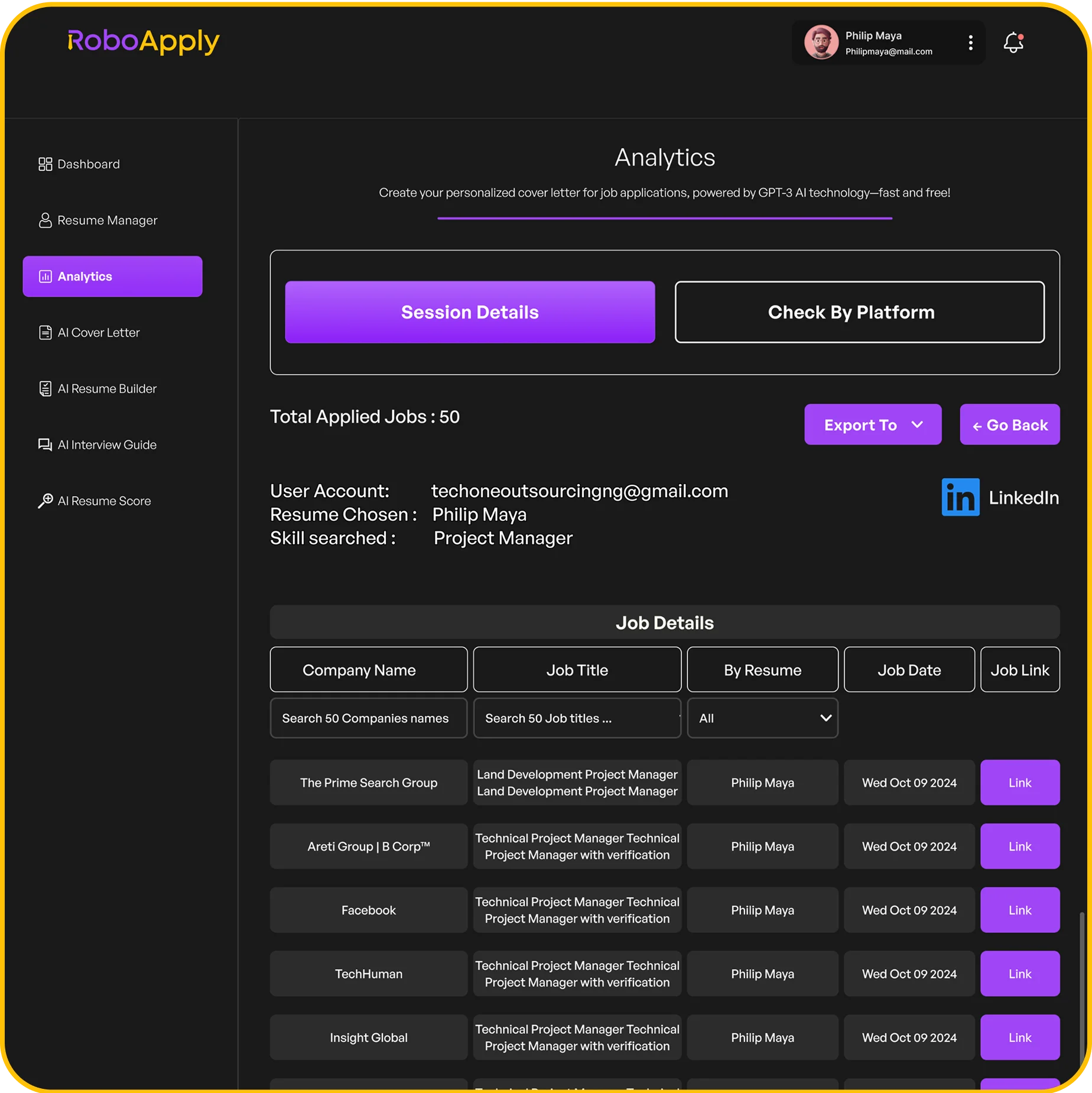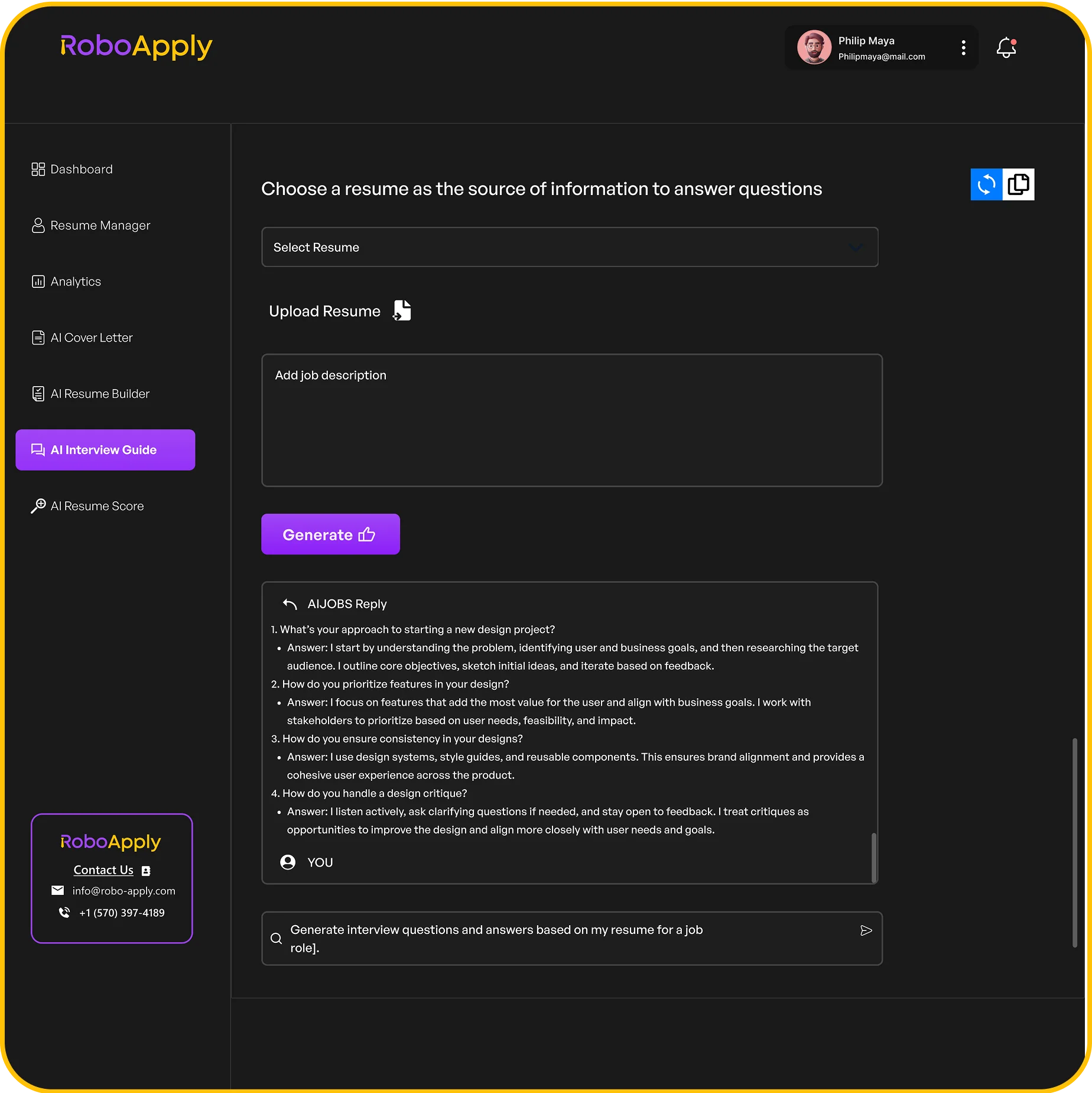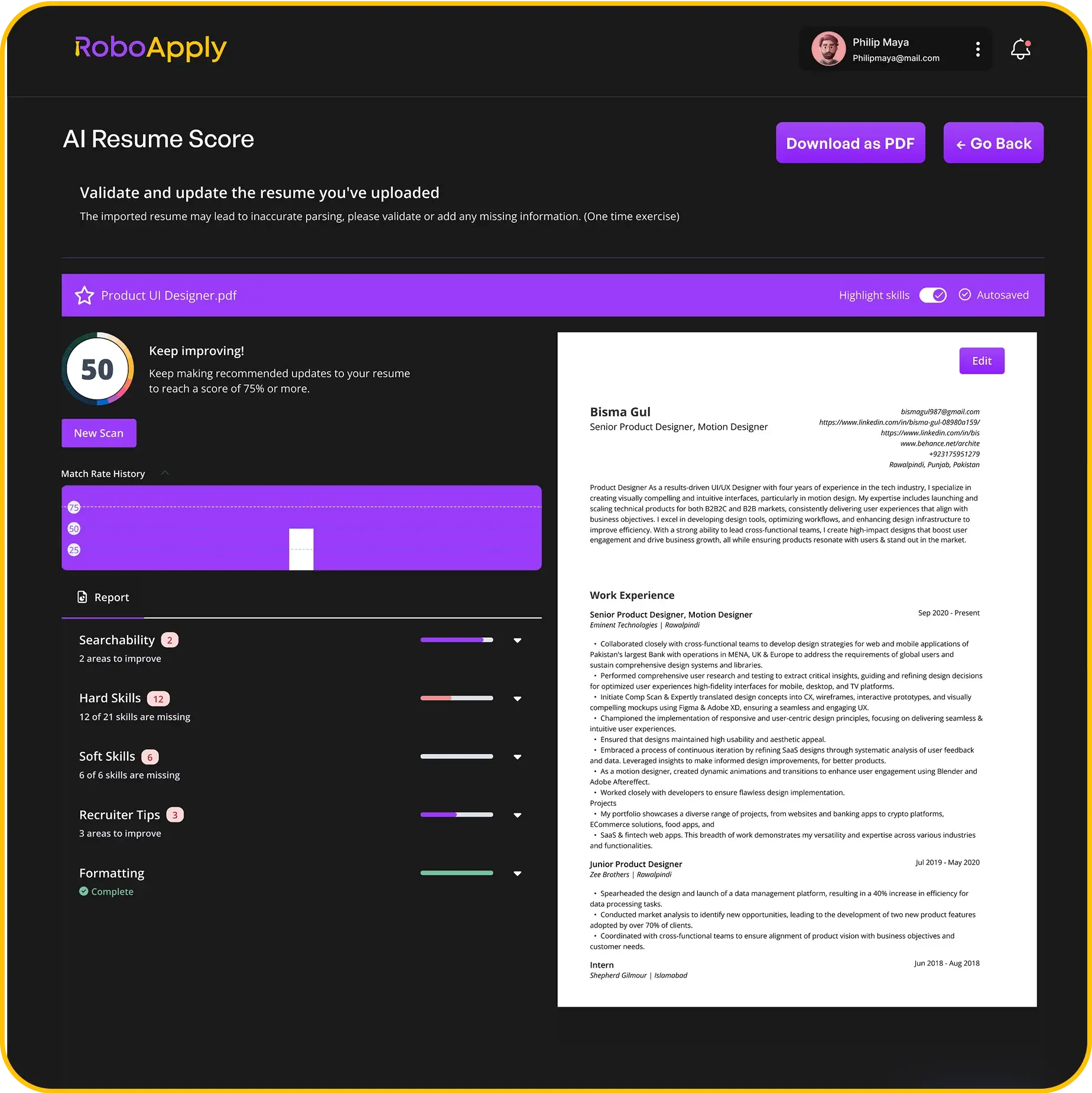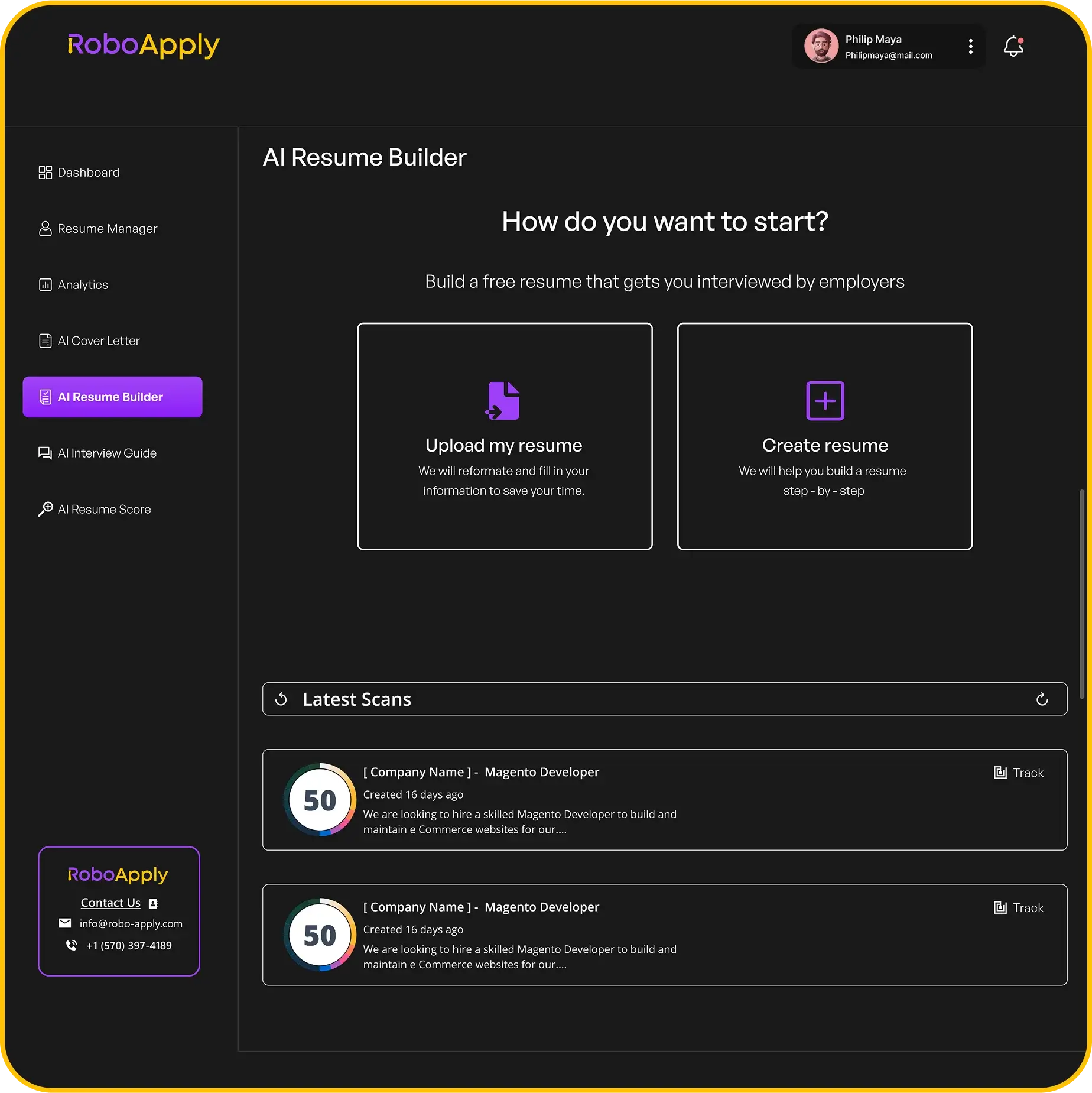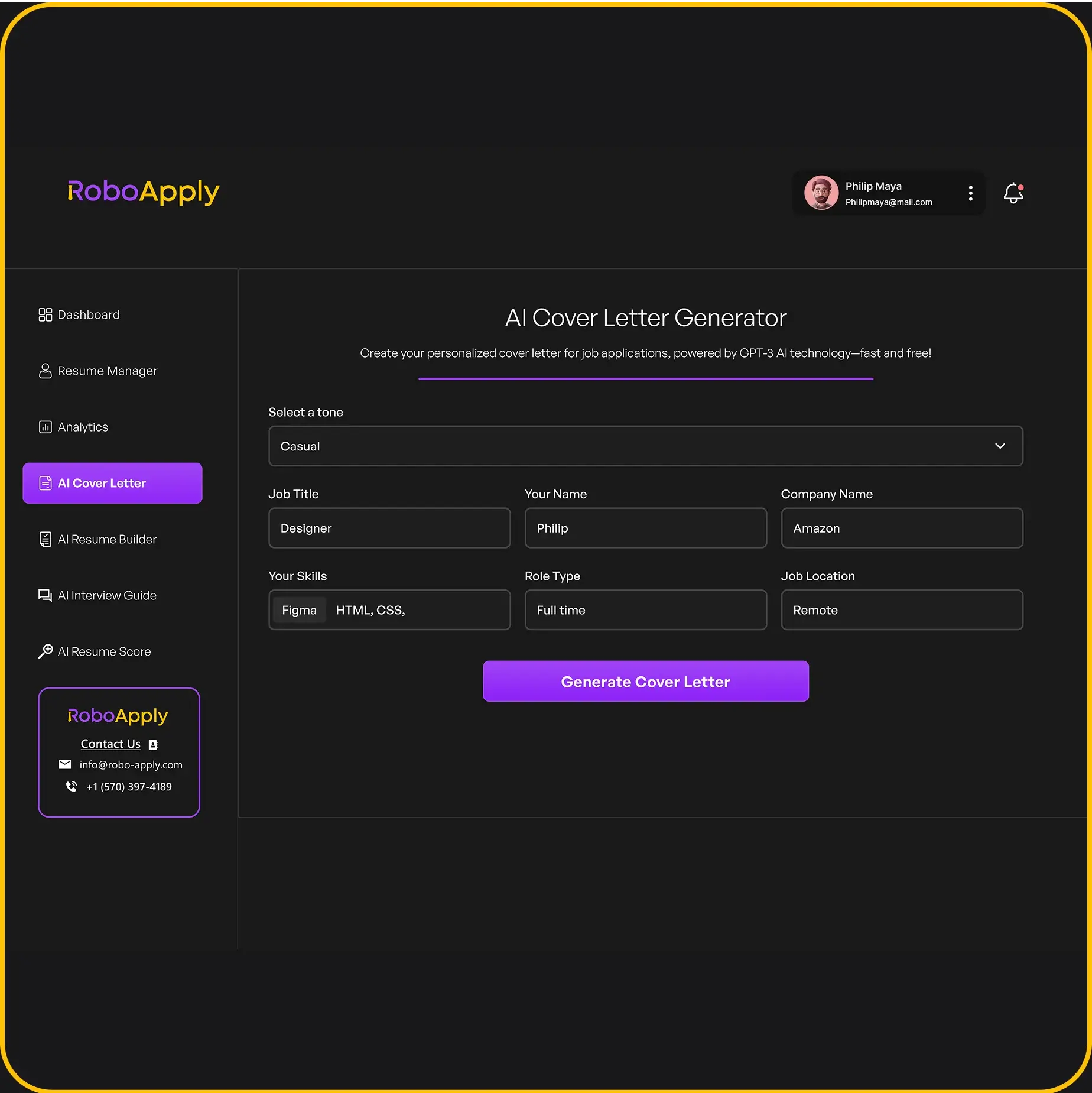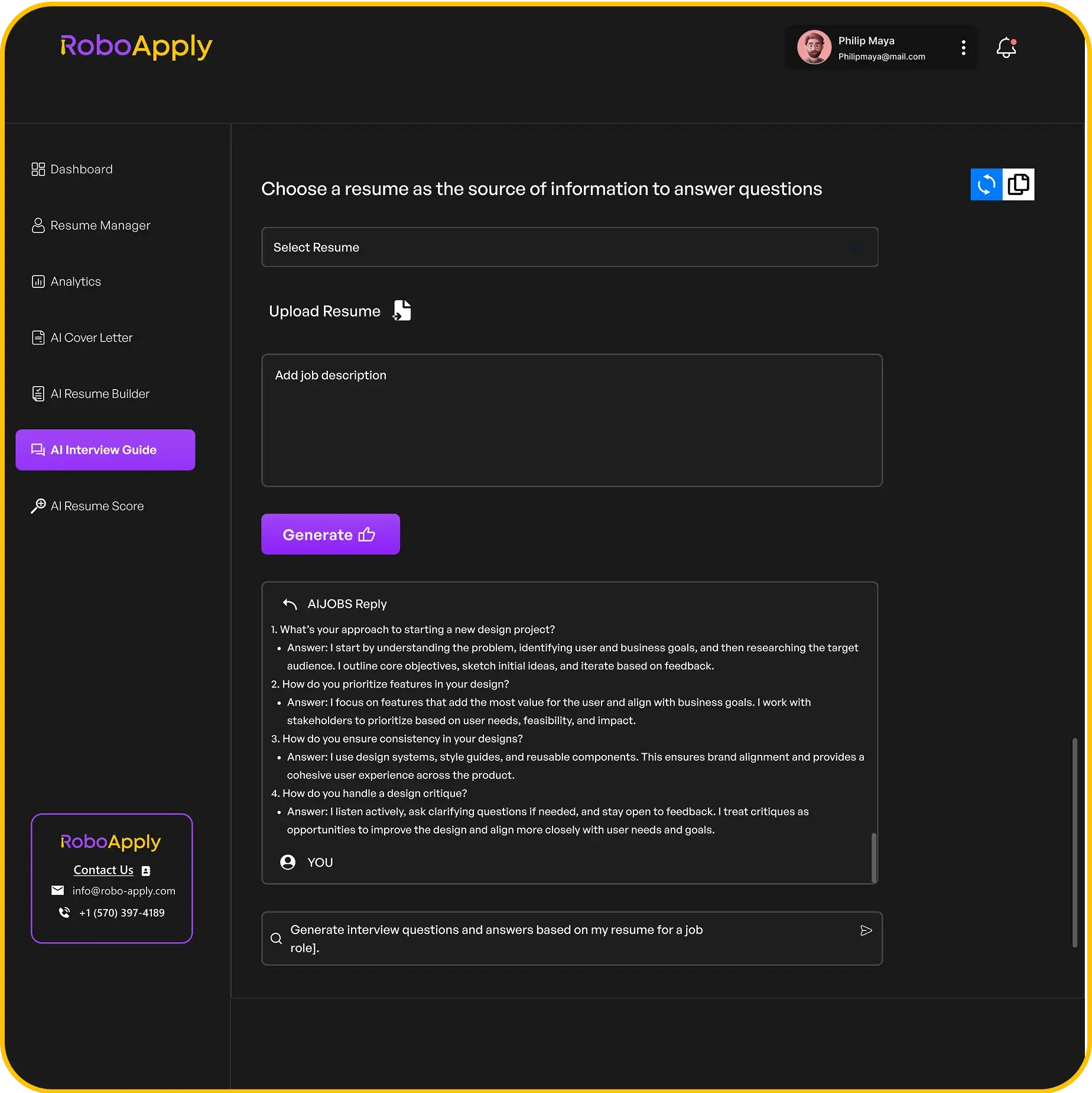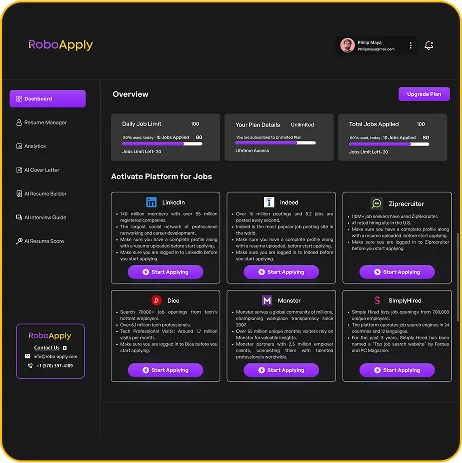Writing a solid cover letter for journal submission can make your research stand out and help editors see why your work deserves a closer look. A well-crafted cover letter should sum up your main findings, explain why your research matters, and show how your paper fits with the journal’s mission. For instance, a straightforward opening like, “Please consider our manuscript titled ‘Improving AI Systems with Machine Learning’ for publication in your journal,” gets right to the point. Wrapping up with something like, “Thank you for considering our work; we believe it will interest your readers,” keeps things professional and polite.

Job seekers can borrow some of these tricks too—starting with, “I am excited to apply for the Social Media Manager role at your company and bring my five years of digital marketing experience,” for example. Using punchy verbs like “developed,” “implemented,” and “achieved” makes resumes pop. RoboApply actually makes this whole process less of a headache by offering custom cover letter examples, scoring resumes for ATS, and even sending out applications automatically on sites like LinkedIn or Indeed. That means less slogging through paperwork and more time prepping for interviews (or just taking a breather).
If you’re tired of the slow job search grind, RoboApply’s personalized tools are worth a look. For a faster, smarter way to get noticed, check them out at https://100.25.233.48 and see how much easier things can get.
Understanding the Purpose of a Cover Letter
A cover letter is your chance to introduce yourself and spotlight your best qualifications. Think of it as a quick handshake before your resume steps in. It gives employers a peek at your personality and what motivates you.
Role in Journal Submission
When you’re submitting to a journal, your cover letter sets the scene. It tells the editors why your manuscript is a good fit and why your research matters at all. Editors often use this first impression to decide if your paper’s worth sending out for review.
Keep it simple and direct. For example:
“I am submitting my manuscript titled ‘Efficient Algorithm for Data Sorting’ for consideration in your journal, as it addresses recent trends highlighted in your call for papers.”
Don’t forget key details—like what’s new about your study, whether you’ve published related work, or if there are any conflicts of interest. These little things can help your submission stand out. RoboApply helps by pulling together the right info and packaging it in a way that actually gets attention. If you’re job hunting, the same logic applies: start with a clear purpose, highlight what makes you unique, and connect your strengths to what the company needs.
Establishing a First Impression
That first impression matters—a lot. Editors and recruiters usually decide in a few seconds if they want to keep reading. A confident opener like “With five years of experience in data analysis, I am eager to contribute to your mission of innovation in tech publishing,” sets the right tone.
Don’t just ramble on; use action words like achieved, implemented, or led to show what you’ve actually done. Skip the fluff and get to the good stuff—your skills and real results.
Here’s a quick list of verbs that pack a punch:
Top Cover Letter Power Verbs:
- Developed
- Led
- Managed
- Collaborated
- Streamlined
For job seekers, RoboApply’s templates and scoring tools help you check all the right boxes, so your cover letter makes a splash. Automated messaging and smart phrasing save time and help you sound more like, well, yourself. If you want to speed up your job search, try RoboApply for faster, smarter job hunting.
Essential Components of a Journal Submission Cover Letter
A good journal submission cover letter makes sure the important stuff doesn’t get lost. A little structure goes a long way toward getting your article noticed by editors.
Contact Information and Salutation
Start with a formal header—your name, department, address, phone, and email. Then add the editor’s details underneath. For example:
Jane Doe
Department of Biology
University of State
123 Research Avenue
New City, State, ZIP
Phone: (555) 123-4567
Email: jane.doe@email.com
Editor-in-Chief
Science Journal
456 Scientific Lane
City, State, ZIP
Use a professional salutation like “Dear Dr. [Editor’s Last Name],” or “Dear Editor-in-Chief,” if you don’t have a specific name. RoboApply can actually fill all this in for you, so you don’t start off sounding generic.
Article Title and Journal Name
State your manuscript’s title and the journal name right up front. Editors are busy and handle a ton of submissions, so clarity helps. Try something like:
“Please consider my manuscript, ‘Effects of Urban Green Spaces on Air Quality,’ for publication in Science Journal.”
Mention the manuscript type—original research, review, whatever. RoboApply can handle this formatting for each journal’s quirks.
Getting these details right at the top shows you’re paying attention and makes the editor’s job easier.
Statement of Significance
Spell out why your research matters, but skip the hype. Be specific:
“This study provides new evidence on the impact of green infrastructure on local pollution levels, contributing practical insights for urban planning policy.”
Point out how your work fits with current issues or fills a gap. Keep the jargon to a minimum—real-world impact is what counts. RoboApply’s customizable templates can help you nail the right tone and scope for each journal.
A tight summary of your findings and why they matter can nudge editors toward a yes.
Disclosure of Conflict of Interest
Be upfront about any conflicts, financial or otherwise. Editors and readers expect transparency. Keep it simple:
“The authors declare no conflicts of interest related to this work.”
Or, if you do have a conflict:
“Author Jane Doe has received grant funding from the Green City Initiative, which is mentioned in the study.”
RoboApply will remind you to include these disclosures and check for missing pieces before you hit submit, so you don’t end up with delays or awkward questions later.
If you want more tips, templates, and ways to skip the busywork, RoboApply helps job seekers and researchers draft clean, professional cover letters and breeze through submissions. Curious? Try RoboApply today and see how much smoother things can run.
Tailoring Your Cover Letter to the Journal
Getting your submission matched to the right journal isn’t just about luck. You’ve got to understand what the journal’s after and talk to the editors in a way that feels genuine and professional. The right approach can really bump up your odds.
Aligning with Journal Scope
Before you send anything off, take a good look at the journal’s aims and scope—usually right on their website. Submitting something that actually fits their topics shows you’ve done your homework.
Here are a couple of phrases you might use:
- “My manuscript examines [brief topic], which directly contributes to the ongoing discussion within [journal name] about [relevant field or keyword].”
- “Given your focus on [journal scope or theme], this article addresses [specific subject], offering new insights on [short outcome or broader impact].”
If you want to make it even clearer, try a bullet list or a quick table showing how your paper fits the journal’s themes:
| Manuscript Topic | Related Journal Issue | Connection |
|---|---|---|
| Machine learning in healthcare | Dec 2024, AI in Medicine Special Issue | Extends clinical applications focus |
RoboApply makes it easier to personalize your cover letters for each journal, so you’re not stuck reformatting for every submission. That way, you can focus on your content instead of wrestling with templates.
Addressing Journal Editors Appropriately
Start your letter with a real greeting, not “To whom it may concern.” If you know the editor’s name, use it:
- “Dear Dr. Martinez,”
- “Dear Editorial Board of [Journal Name],”
Show that you respect the journal—and if you’ve read or referenced their past articles, that’s worth mentioning too. Wrap up with something like:
- “Thank you for considering my submission. I look forward to the possibility of contributing to [journal name].”
- “Please let me know if further information is needed to support the review process.”
RoboApply’s templates help you get these greetings and closings right, which is a lifesaver when you’re applying to a bunch of journals or jobs.
Want to give your applications a boost? RoboApply checks your resumes and cover letters, suggesting power verbs like collaborated, developed, or managed—great for both academic and professional worlds. For a streamlined, personal, and less stressful process, check out RoboApply.
Highlighting Your Research Paper’s Strengths

Showing what’s new and different about your research is key when submitting to a journal. Editors want to know—right away—what sets your paper apart and whether it’s something their readers will care about.
Emphasizing Originality
Editors are hunting for new ideas, not just more of the same. Honestly, job seekers get it—your cover letter or resume needs a hook, so does your research.
Lead with a bold statement. For example:
“This paper addresses a previously unexplored link between workplace automation and employee satisfaction,” or
“Unlike previous studies, this research uses real-time job application data to reveal hiring trends across diverse platforms.”
What makes your research stand out?
- A fresh take on a stubborn problem.
- New methods or data sources.
- Filling gaps no one’s bothered with before.
Phrases like “To the best of our knowledge, no prior studies have examined…” instantly flag originality. RoboApply does something similar for job applications, making sure every cover letter highlights what’s unique about your skills and experience. That’s what gets you noticed.
Detailing Novel Contributions
When you spell out exactly what your research brings to the table, it’s just easier for editors to see why it matters. Don’t dance around it—just say what’s new or improved.
If you want to keep it simple, try bullet points or a numbered list for your main contributions:
- Developed an automated approach to analyze resume scoring for ATS systems.
- Introduced a framework to compare applicant success rates across top job platforms.
- Identified key factors that improve job-matching efficiency.
Some handy ways to phrase your contributions:
- “This study introduces a new model that…”
- “Our findings present significant improvements in…”
- “We provide practical solutions that can be applied to…”
Honestly, job seekers get a similar boost from RoboApply’s automation. It digs into each resume and cover letter, pulls out those power verbs and real results, and just makes the whole process less of a headache. You can actually focus on getting interviews instead of fussing over formatting. If you’re tired of the old way, try RoboApply today to get started.
Best Practices for Clarity and Professionalism

A cover letter that gets noticed? It’s direct, respectful, and doesn’t have any glaring mistakes. Clean formatting and clarity really do help your message come across the right way.
Maintaining Formal Tone
You’ll want to stick with formal language—no casual stuff. Start with a professional greeting like Dear Editor or Dear Hiring Manager. If you know their name, even better.
An opening line that actually sounds interested works wonders: “I am submitting my manuscript for your consideration because it aligns with your journal’s focus.” Or, if you’re job hunting: “I am excited to apply for the position of Software Engineer at [Company], as my experience matches your requirements.”
Don’t be shy about using strong verbs—“developed,” “implemented,” “analyzed”—to show what you’ve done. Keep it polite and to the point, and skip the slang. Always thank the reader for their time. Something like, “Thank you for reviewing my application; I look forward to your response,” leaves a good final impression.
RoboApply can whip up formal, tailored cover letters for you, with the right greetings, closings, and those punchy verbs built in.
Proofreading and Formatting
Nothing sinks credibility faster than sloppy mistakes. Give your letter a once-over for spelling, grammar, and punctuation. Reading it out loud sometimes catches things spell check misses. RoboApply will even flag typos and suggest fixes before you send anything out.
A little formatting goes a long way:
- Stick to a readable font (Arial or Times New Roman, anyone?) at 11–12 pt.
- Single space, but leave an extra line between paragraphs.
- Use section headings if it helps break things up.
If you’re sending by email, just paste the text into the message body and pick a subject line that’s clear, like “Job Application – Data Analyst – Your Name.” RoboApply’s templates are built for both print and digital, so you don’t have to sweat the details.
If you’re tired of fiddling with margins and fonts, RoboApply keeps your letters sharp, clear, and professional every time. For a less painful job search, check out beta.robo-apply.com.
Addressing Peer Review and Revision Status

Being upfront about where else you’ve sent your manuscript or if you’re revising it for another journal? That’s just good manners—and it helps keep things moving. Mentioning this in your cover letter boosts your credibility and avoids confusion later.
Noting Previous Journal Submissions
If your manuscript has been elsewhere, just say so, briefly. Editors appreciate honesty, especially if the paper was withdrawn or rejected.
Try something like: “This manuscript was previously submitted to [Journal Name], but it was withdrawn prior to review.”
And for job seekers using RoboApply or similar tools, it’s smart to be open too. If you’re reapplying, maybe say: “I have applied to a role at your company before, and I am excited to be considered again.”
A table or checklist can make this info easy to spot:
| Detail | Example Statement |
|---|---|
| Previous Journal | “Previously submitted to [Name], withdrawn before review.” |
| Previous Job | “Applied to [Company Name] previously.” |
Some verbs to keep in mind: clarified, referenced, stated, summarized.
Disclosures for Revise and Resubmit
If it’s a revise and resubmit, let the editor know. Spell out what’s changed: “This manuscript is a revised version based on suggestions from previous peer review.” And then be specific, like, “We addressed feedback by clarifying the methods section and updating the results.”
Job seekers automating their applications with RoboApply should do the same—be clear about updates. Maybe add: “This application reflects updates to my experience since my previous submission, including new certifications in data analytics.”
A few things that help:
- List the main revisions or updates.
- Use clear headings like Key Changes or Improvements Made.
- Wrap up with a strong closing: “Thank you for considering this revised application.”
RoboApply can handle these disclosures automatically, saving you time and helping you meet all the submission requirements. If you want to make your applications (or submissions) easier, check out RoboApply’s tools for personalizing cover letters and automating job applications.
Common Mistakes to Avoid in Cover Letters

A strong cover letter can really make a difference, whether you’re submitting to a journal or applying for a job. Paying attention to details—and steering clear of classic mistakes—can help your letter stand out.
Omitting Essential Information
It’s surprisingly common to forget key details like contact info or specifics about your submission. Every cover letter should put your name, email, phone number, and the date right at the top.
For journals, always include the manuscript title, submission type, and the journal’s name. If you skip these, you risk confusion or even losing your application. Same goes for job applications: missing contact information can mean a missed opportunity.
A short intro about your research or qualifications shows you’re paying attention. For example:
“I am submitting my manuscript, ‘Recent Advances in Genetics,’ for consideration at [Journal Name].”
Or, for jobs:
“I am excited to apply for the Marketing Analyst position at ABC Inc., as advertised on LinkedIn.”
RoboApply checks for these basics and reminds you if you’ve left something out.
Using Generic Content
Nothing says “I don’t care” like a copy-paste cover letter. Editors and employers can spot generic content a mile away, and it doesn’t help your chances.
If you start with “Dear Sir/Madam, please find my application attached”, you’re missing an opportunity to connect. Use the editor’s or hiring manager’s name when you can, and make sure your letter is tailored for that specific journal or job.
To make your letter feel genuine, mention how your work or skills fit the organization or publication. Strong action verbs—developed, analyzed, researched, managed—show you’ve actually accomplished something.
Try phrases like:
- “My research explores topics that align with the mission of [Journal Name].”
- “In my previous role, I managed digital campaigns that increased engagement by 35%.”
RoboApply helps by generating personalized cover letters for each job, so you’re not repeating yourself and your application actually stands out. It’s a real time saver.
If you’re ready to stop missing details and start sending better applications, give RoboApply a try at beta.robo-apply.com.
Frequently Asked Questions
A cover letter for journal submission doesn’t have to be complicated. Just keep it clear, concise, and tailored to what the journal’s asking for. Tools like RoboApply can help researchers and job seekers crank out effective, personalized letters without wasting hours on templates.
What should be included in the structure of a cover letter for a research paper submission?
Kick things off with the manuscript title and type (like research article or review). Add a quick intro about why your paper fits the journal.
Sum up your main findings and why they matter in a couple sentences. Wrap up with a thank you and a note that you’re happy to answer reviewer questions. RoboApply’s templates for job applications use a similar structure.
How can I align my cover letter with the journal’s submission guidelines?
Check the journal’s author instructions—seriously, don’t skip this. Make sure you mention everything they ask for, like manuscript type, co-authors’ consent, or conflicts of interest. RoboApply can help fill in these details by matching your content to each journal’s requirements, just like it does for ATS job matching.
What are the best practices for highlighting the significance of my research in a submission cover letter?
Be clear about why your work matters: “This study addresses a critical gap in…” or “The findings provide new insights into…” Skip the vague stuff.
RoboApply suggests strong openers and highlight phrases to make your research pop, just like it does for resume achievements.
Is it necessary to reference previous publications in a cover letter for a journal submission?
Not always, but mentioning key earlier work can help show how your research builds on or differs from what’s already out there. For job seekers, RoboApply suggests briefly referencing major achievements—kind of like citing previous publications.
How can I effectively communicate the novelty of my research in the cover letter?
Say what’s actually new, and don’t be afraid to make comparisons. Try: “Unlike prior studies, this manuscript presents…” or “This method allows…” RoboApply’s AI can help you craft impact statements for job applications too, spotlighting your unique skills and results.
What are the common pitfalls to avoid when drafting a cover letter for my manuscript?
Don’t let your letter drag on or just copy and paste your abstract. It’s easy to slip into technical jargon, but editors aren’t always fans of that. Ignoring journal guidelines? That’s another trap. And, honestly, a quick spellcheck goes a long way—typos can really undercut your credibility.
RoboApply takes a lot of the hassle out of this. It reviews and scores your letter for clarity and fit, so you’re less likely to miss something important (or embarrassing). If you’re looking to make job applications less painful, RoboApply can help you write, score, and send documents without the usual stress. Curious? Check it out at RoboApply.




